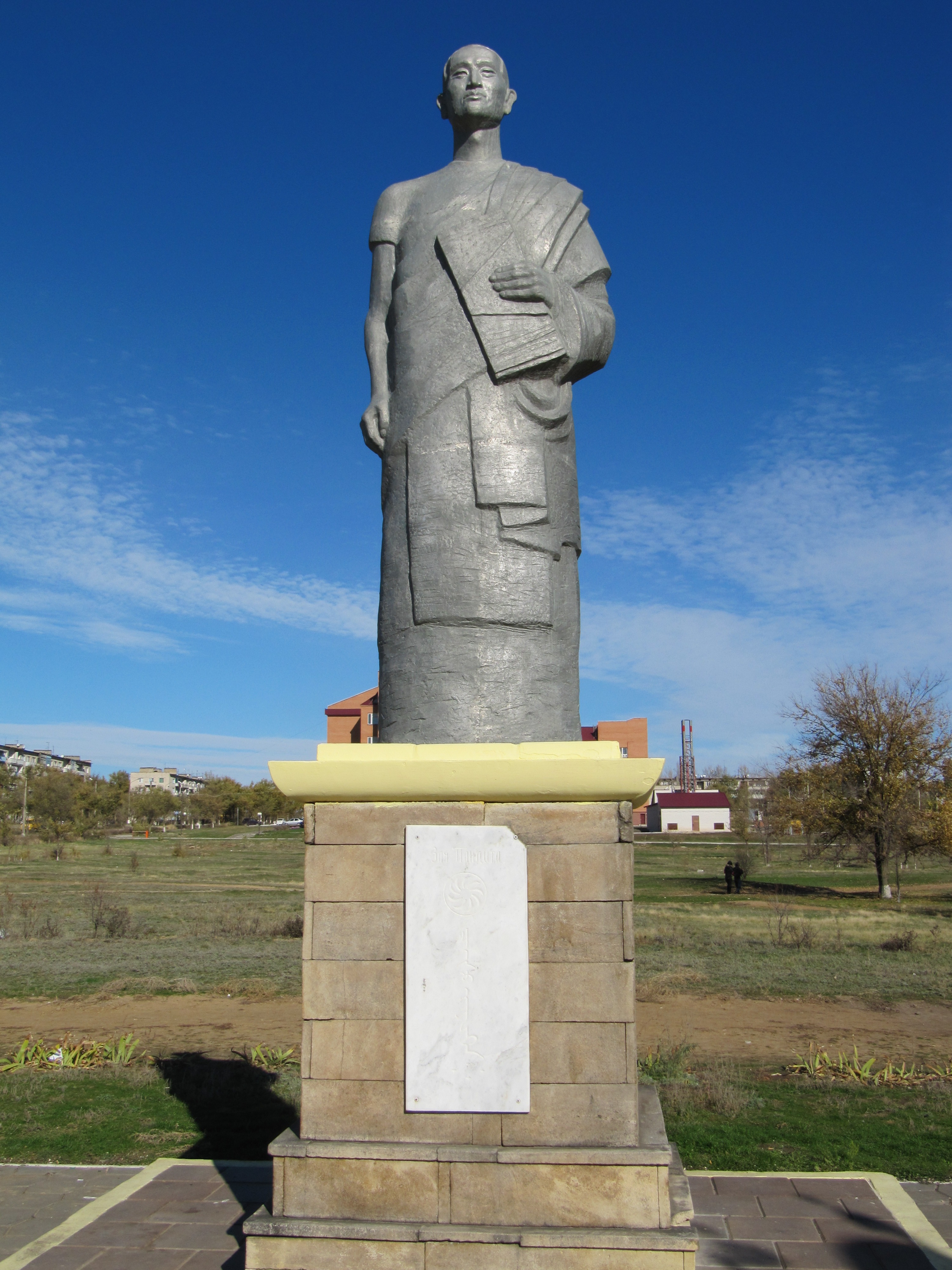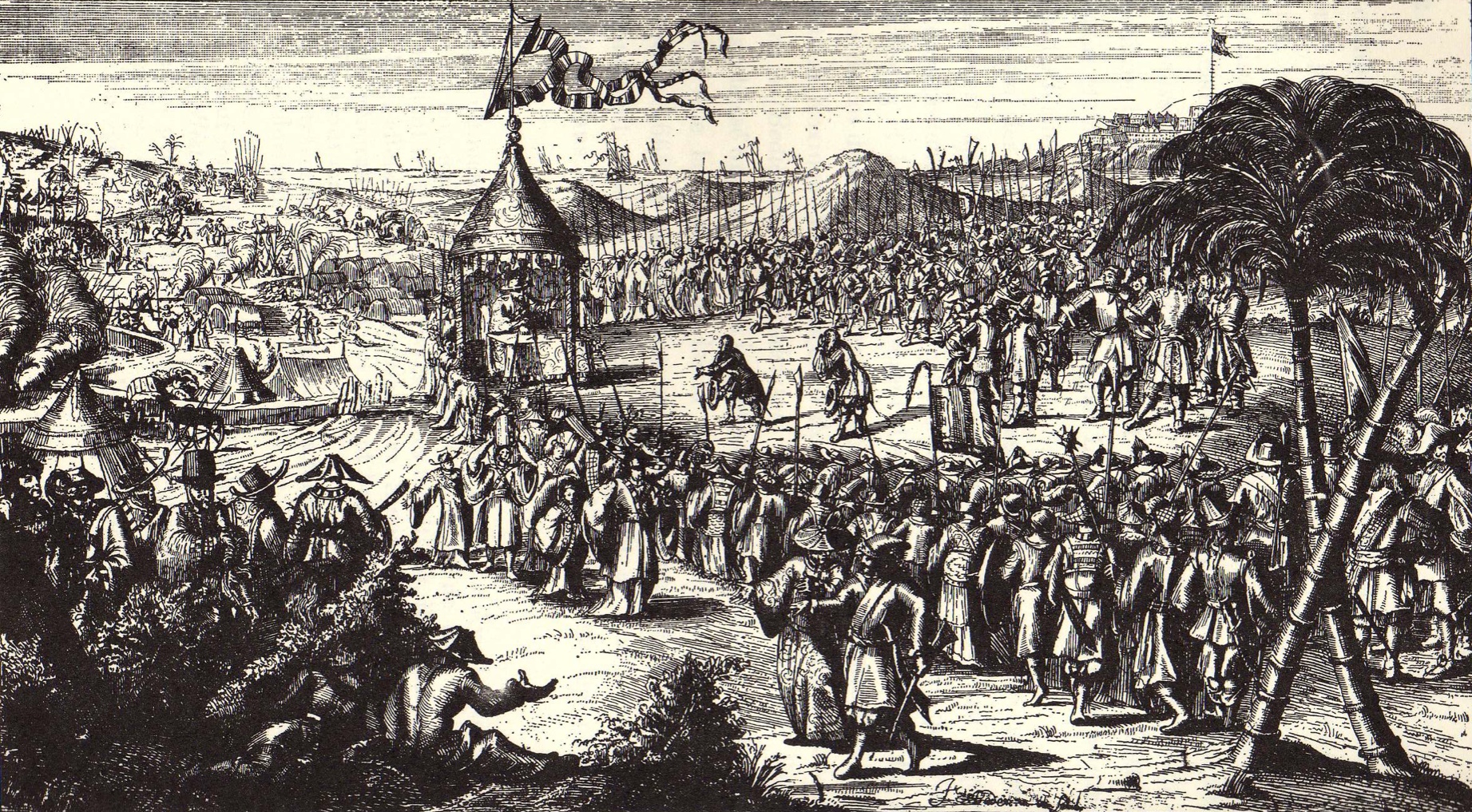|
Zaya Pandita
Zaya Pandita Namkhaijamts (, 1599–1662) was a Mongolian Tibetan Buddhist missionary priest and scholar of Oirat origin who is the most prominent Oirat Buddhist scholar. Among his accomplishments is the invention of the Clear Script. Biography Zaya Pandita was the fifth son of Babakhan, a minor Khoshut prince. After Babakhan converted to Tibetan Buddhism in the early 17th century, he, like many other Oirat princes, wished for one of his sons to enter the Buddhist clergy. In pursuit of his wish, Babakhan chose Zaya to become a śrāmaṇera ("novice monk"). In 1615, Zaya journeyed to Lhasa where he would study and practice Buddhism, including study under the guidance of the Lobsang Chökyi Gyaltsen, 4th Panchen Lama. In 1638, Zaya Pandita left Tibet at the direction of the Panchen Lama to conduct missionary work among the Mongols. One year later in 1640, he assisted Erdeni Batur, Khun Taiyishi of the Choros (Oirats) tribe, in assembling a pan-Mongol conference between th ... [...More Info...] [...Related Items...] OR: [Wikipedia] [Google] [Baidu] |
Kazakhs
The Kazakhs (Kazakh language, Kazakh: , , , ) are a Turkic peoples, Turkic ethnic group native to Central Asia and Eastern Europe. They share a common Culture of Kazakhstan, culture, Kazakh language, language and History of Kazakhstan, history that is closely related to those of other Turkic peoples of Western and Central Asia. The majority of ethnic Kazakhs live in their transcontinental nation state of Kazakhstan. Ethnic Kazakh communities are present in Kazakhstan's border regions in Russia, northern Uzbekistan, northwestern China (Ili Kazakh Autonomous Prefecture), western Mongolia (Bayan-Ölgii Province) and Iran (Golestan province). The Kazakhs arose from the merging of various medieval tribes of Turkic and Mongolic origin in the 15th century. Kazakh identity was shaped following the foundation of the Kazakh Khanate between 1456 and 1465, when following the disintegration of the Turkification, Turkified state of Golden Horde, several tribes under the rule of the sultans J ... [...More Info...] [...Related Items...] OR: [Wikipedia] [Google] [Baidu] |
Lamas
Lamas may refer to: * The plural form of Lama, a title for a teacher of the Dharma in Tibetan Buddhism. Places * Lamas Province, Peru ** Lamas District ** Lamas, Peru, the capital of Lamas Province and seat of Lamas District * Lamas (Braga), a parish in Braga District, Portugal * Lamas (Cadaval), a parish in Cadaval Municipality, Lisbon District, Portugal * Lamas (Miranda do Corvo), a parish in Miranda do Corvo Municipality, Coimbra District, Portugal * Lamas (Macedo de Cavaleiros), a parish in Macedo de Cavaleiros Municipality, Bragança District, Portugal * Santa Maria de Lamas, a parish in Aveiro District, Portugal * Lamas, Norfolk, a village in England Other uses * Lamas (surname) * Lamas Quechua, a variety of Quechuan language * London and Middlesex Archaeological Society (LAMAS) See also *Lama (other) *Lammas, a Christian holiday *Llama (other) A llama is a South American animal. Llama may also refer to: * Llama (language model), a large language m ... [...More Info...] [...Related Items...] OR: [Wikipedia] [Google] [Baidu] |
Tibetan Buddhist Priests From Kalmykia
Tibetan may mean: * of, from, or related to Tibet * Tibetan people, an ethnic group * Tibetan language: ** Classical Tibetan, the classical language used also as a contemporary written standard ** Standard Tibetan, the most widely used spoken dialect ** Tibetan pinyin, a method of writing Standard Tibetan in Latin script ** Tibetan script ** any other of the Tibetic languages Tibetan may additionally refer to: Culture * Old Tibetan, an era of Tibetan history * Tibetan art * Music of Tibet * Tibetan rug * Tibetan culture * Tibetan cuisine Religion * Tibetan Buddhism * Tibetan Muslims Other uses * Tibetan alphabet * Tibetan (Unicode block) * Tibetan name * Tibetan calendar * Tibetan Spaniel, a breed of dog * Tibetan Mastiff, a breed of dog See also * Tibet (other) * Tibetan Bells (other) * Traditional Tibetan medicine Traditional Tibetan medicine or Sowa Rigpa is the Tibetan medical system developed in the 8th century under King Trisong ... [...More Info...] [...Related Items...] OR: [Wikipedia] [Google] [Baidu] |
1662 Deaths
Events January–March * January 4 – Dziaddin Mukarram Shah I of Kedah, Dziaddin Mukarram Shah becomes the new Sultan of Kedah Sultanate, Kedah, an independent kingdom on the Malay Peninsula, upon the death of his father, Muhyiddin Mansur Shah of Kedah, Sultan Muhyiddin Mansur. * January 10 – At the age of 19, Louis I, Prince of Monaco, Louis Grimaldi becomes the new Prince of Monaco upon the death of his grandfather, Honoré II, Prince of Monaco, Honoré II. * January 14 – A Portuguese garrison invades Morocco and kidnaps 35 women and girls, then steals 400 head of cattle. The Moroccans counterattack and kill the garrison's commander, 12 knights and 38 other Portuguese soldiers before the surviving Portuguese are given sanctuary inside the English Tangier, English fortress at Tangier. A brief war ensues between England and Morocco. * January 22 – Former Chinese Emperor Zhu Youlang, Yongli, who had surrendered to General Wu Sangui in December, ... [...More Info...] [...Related Items...] OR: [Wikipedia] [Google] [Baidu] |
1599 Births
__NOTOC__ Events January–March * January 8 – The Jesuit educational plan, known as the ''Ratio Studiorum'', is issued. * January 22 – The Acoma Massacre begins in what is now northern New Mexico in the U.S., as Santa Fe de Nuevo Mexico viceroy Juan de Oñate leads 70 armed Spanish soldiers against the indigenous Keres people at Aak'u (the Acoma Pueblo) near what is now Albuquerque, New Mexico. In three days, 500 Acoma men and 300 women and children are killed by the Spanish. * February 20 – On Shrove Tuesday, the earliest known performance of William Shakespeare's play ''As You Like It'' is given, presented at Richmond Park for Queen Elizabeth. * February 21 **At Southwark, near London on the south bank of the River Thames, the land upon which the Globe Theatre will be built is leased by Nicholas Brend to a team of investors led by William Shakespeare, Thomas Pope, actors Cuthbert and Richard Burbage, and three others. **Lorenzo Sauli becomes the new Doge of ... [...More Info...] [...Related Items...] OR: [Wikipedia] [Google] [Baidu] |
Xinjiang
Xinjiang,; , SASM/GNC romanization, SASM/GNC: Chinese postal romanization, previously romanized as Sinkiang, officially the Xinjiang Uygur Autonomous Region (XUAR), is an Autonomous regions of China, autonomous region of the China, People's Republic of China (PRC), located in the Northwest China, northwest of the country at the crossroads of Central Asia and East Asia. Being the List of Chinese administrative divisions by area, largest province-level division of China by area and the List of the largest country subdivisions by area, 8th-largest country subdivision in the world, Xinjiang spans over and has about 25 million inhabitants. Xinjiang Borders of China, borders the countries of Afghanistan, India, Kazakhstan, Kyrgyzstan, Mongolia, Pakistan, Russia, and Tajikistan. The rugged Karakoram, Kunlun Mountains, Kunlun and Tian Shan mountain ranges occupy much of Xinjiang's borders, as well as its western and southern regions. The Aksai Chin and Trans-Karakoram Tract regions ... [...More Info...] [...Related Items...] OR: [Wikipedia] [Google] [Baidu] |
Dzungaria
Dzungaria (; from the Mongolian words , meaning 'left hand'), also known as Northern Xinjiang or Beijiang, is a geographical subregion in Northwest China that corresponds to the northern half of Xinjiang. Bound by the Altai Mountains to the north and the Tian Shan mountain range to the south, Dzungaria covers approximately , and borders Kazakhstan to the west and Mongolia to the east. In contexts prior to the mid-18th century Dzungar genocide, the term "Dzungaria" could cover a wider area, coterminous with the Oirat-led Dzungar Khanate. Although Dzungaria is geographically, historically, and ethnically distinct from the Tarim Basin or Southern Xinjiang (Nanjiang), the Manchu-led Qing dynasty integrated both areas into one province, Xinjiang. Dzungaria is Xinjiang's center of heavy industry, generates most of the region's GDP, and houses its political capital Ürümqi ( Oirat for 'beautiful pasture'). As such, Dzungaria continues to attract intraprovincial and interprovinci ... [...More Info...] [...Related Items...] OR: [Wikipedia] [Google] [Baidu] |
Oirat Language
Oirat ( Clear script: , ; Kalmyk: , ; Khalkha Mongolian: , ) is a Mongolic language spoken by the descendants of Oirat Mongols, now forming parts of Mongols in China, Kalmyks in Russia and Mongolians. Largely mutually intelligible to other core Central Mongolic languages, scholars differ as to whether they regard Oirat as a distinct language or a major dialect of the Mongolian language. Oirat-speaking areas are scattered across the far west of Mongolia, the northwest of ChinaSečenbaγatur et al. 2005: 396-398 and Russia's Siberia region and Caspian coast, where its major variety is Kalmyk. In China, it is spoken mainly in Xinjiang, but also among the '' Deed Mongol'' of Qinghai and Subei County in Gansu. In all three countries, Oirat has become variously endangered or even obsolescent as a direct result of government actions or as a consequence of social and economic policies. Its most widespread tribal dialect, which is spoken in all of these nations, is Torgut.Svan ... [...More Info...] [...Related Items...] OR: [Wikipedia] [Google] [Baidu] |
Kalmyk People
Kalmyks (), archaically anglicised as Calmucks (), are the only Mongolic ethnic group living in Europe, residing in the easternmost part of the European Plain. This dry steppe area, west of the lower Volga River, known among the nomads as Itil/Idjil, a basin on the northwest shore of the Caspian Sea, was the most suitable land for nomadic pastures. Itil or Idjil, the ancient name of the Volga River, written in the archaic Oirat script, means exactly that: the "pastures". The ancestors of Kalmyks were nomadic groups of Oirat-speaking Mongols, who migrated from Western Mongolia to Eastern Europe three times: in early medieval times, establishing in the 6th–8th centuries the Avar Khanate; in medieval times, establishing the Ulus of Juchi and Il-Kanate as Khuda-in-laws of Genghis Khan; and finally, in early modern times, establishing the Kalmyk Khanate in the 17th century. The Oirat language belongs to the western branch of the Mongolic language family, whose speakers inc ... [...More Info...] [...Related Items...] OR: [Wikipedia] [Google] [Baidu] |







